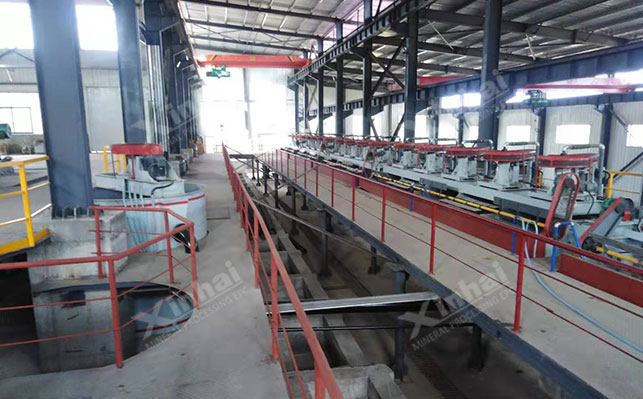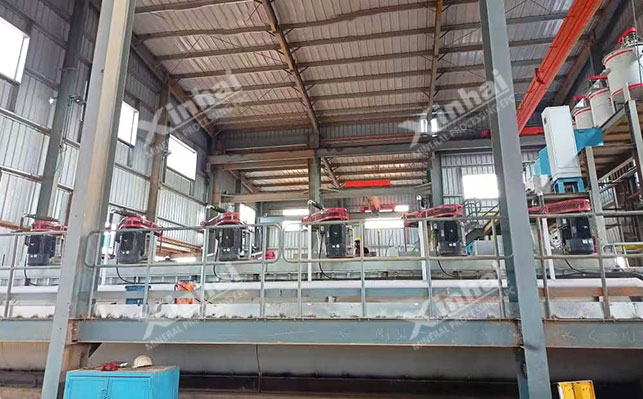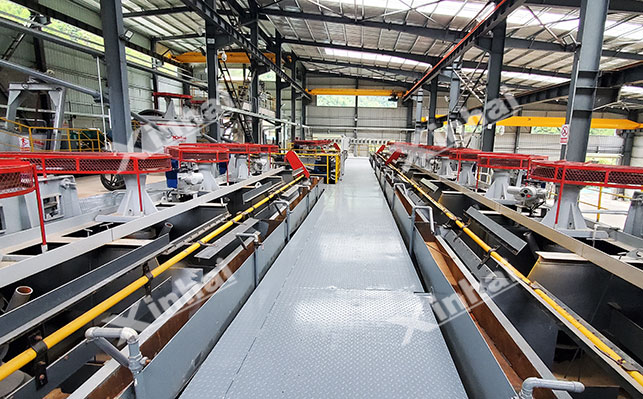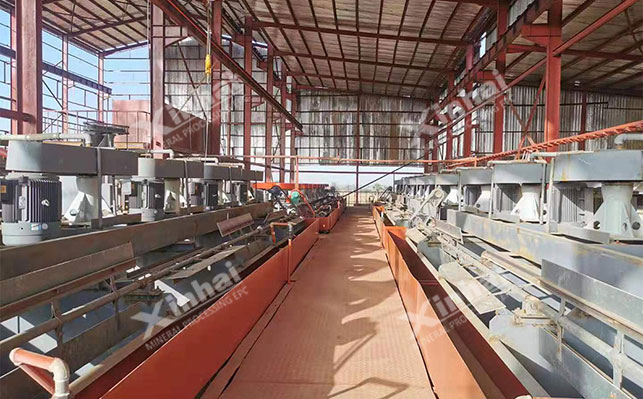
15311826613
Click to add WeChatIn the process of the vigorous development of modern industry, cobalt, as a key strategic metal, is widely used in many important fields such as batteries, super alloys, and cemented carbide. Cobalt ore refers to an ore containing cobalt elements and has mining value. Cobalt usually exists in a variety of mineral forms, such as common cobalt sulfide ores (such as cobaltite, sulfide copper cobalt ore, etc.) and cobalt oxide ores (such as hydrocobaltite, cobaltite, etc.). Due to the different grades and properties of cobalt ores, the beneficiation methods are also rich and varied, and flotation technology occupies a pivotal position in the field of cobalt ore beneficiation. The following focuses on introducing cobalt ore flotation, including flotation methods, processes, etc.

Cobalt ore flotation is based on the significant differences in the physical and chemical properties of the mineral surface. By adding specific reagents, the efficient separation of cobalt minerals and gangue minerals is achieved, thereby achieving the goal of cobalt enrichment and recovery. In cobalt ore, cobalt minerals and gangue minerals differ in surface wettability and charge characteristics, which provides the basic conditions for flotation separation. In the flotation process, by cleverly adding reagents, the surface properties of the minerals can be changed, so that the surface of the cobalt minerals changes from hydrophilic to hydrophobic, so that the cobalt minerals can be separated from the slurry by the buoyancy of bubbles to obtain cobalt concentrate, improve the grade of cobalt, and lay a good foundation for subsequent smelting and other links. Common cobalt ore flotation methods include: positive flotation, reverse flotation, preferential flotation and mixed flotation.

Positive flotation is a method of directly flotating cobalt minerals. This method is often used when treating cobalt sulfide ores. By adding xanthate collectors, such as ethyl xanthate, butyl xanthate, etc., they can chemically adsorb with metal ions on the surface of cobalt sulfide minerals, form a hydrophobic film on the surface of the mineral, and significantly enhance the hydrophobicity of the mineral surface. At the same time, adding frothers such as pine oil produces a large number of stable and dense bubbles in the slurry. Under the action of stirring, the hydrophobic cobalt mineral particles fully contact and firmly adhere to the bubbles. As the bubbles float to the surface of the pulp, a foam layer rich in cobalt minerals is formed, which is finally scraped out by the scraping device to obtain cobalt concentrate.

The reverse flotation method is opposite to the direct flotation method. It floats the gangue minerals and leaves the cobalt minerals in the pulp. In some cobalt ores, the floatability of gangue minerals is relatively good, and reverse flotation is more appropriate at this time. For example, when treating some cobalt ores with more silicate gangue, agents that can inhibit cobalt minerals and have a collecting effect on gangue minerals are added. For example, amine collectors are used to float gangue minerals such as quartz, while adjusting agents such as water glass are added to inhibit cobalt minerals, so that gangue minerals float out first, thereby achieving the separation of cobalt minerals from gangue minerals, and then the cobalt minerals in the pulp are further enriched.

The priority flotation method is suitable for cobalt ores with multiple minerals coexisting, aiming to preferentially select one of the cobalt minerals. When there are many different types of cobalt minerals in the cobalt ore and their floatability is different, the preferential flotation method can play an advantage. For example, in ores containing cobalt sulfide ore and cobalt oxide ore, the floatability of cobalt sulfide ore is usually better than that of cobalt oxide ore. At this time, a collector with strong selectivity for cobalt sulfide ore, such as black medicine (ethylthiocyanate, etc.), can be added first to preferentially float out the cobalt sulfide ore to obtain cobalt sulfide concentrate. Then, for the remaining cobalt oxide ore in the slurry, adjust the reagent system and use a flotation method suitable for cobalt oxide ore for recovery.

The mixed flotation method is to float out multiple target minerals together and then separate them. In some complex cobalt ores, multiple cobalt minerals and other valuable minerals coexisting with cobalt have similar floatability and are difficult to separate one by one through preferential flotation. At this time, the mixed flotation method is used to add collectors that can capture multiple target minerals at the same time, such as certain combined collectors (xanthocyanate and black medicine mixed in a certain proportion), so that these minerals are attached to the bubbles and float together to obtain mixed concentrates. Subsequently, other methods such as gravity separation, magnetic separation or chemical separation are used to further separate and purify the various minerals in the mixed concentrate to obtain different concentrate products.
The above is an introduction to several common cobalt ore flotation methods. In actual beneficiation plants, how to select cobalt depends on the properties of cobalt ore, selection indicators and other characteristics. It is recommended to design a suitable cobalt ore beneficiation process based on the test results to improve the efficiency of cobalt beneficiation.